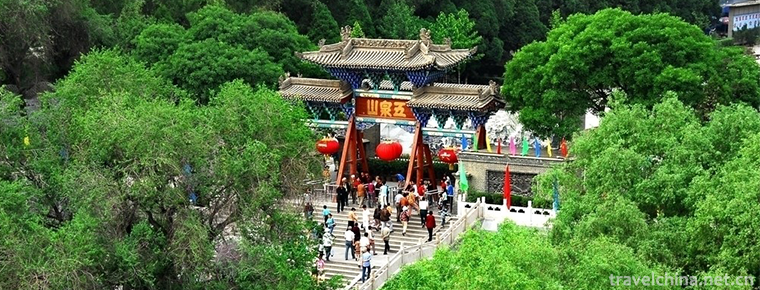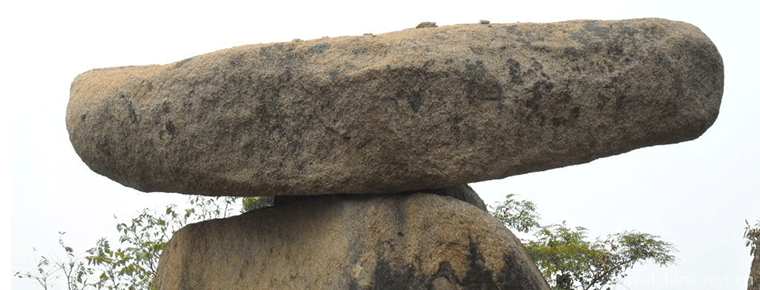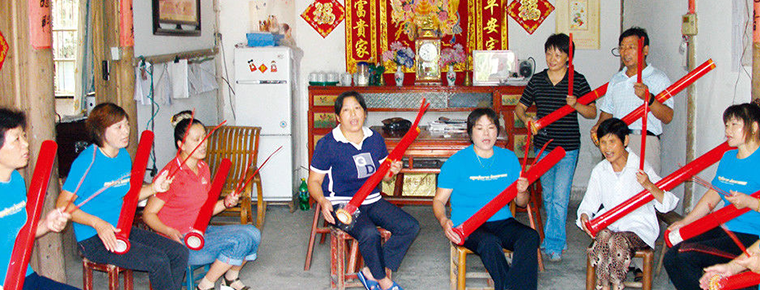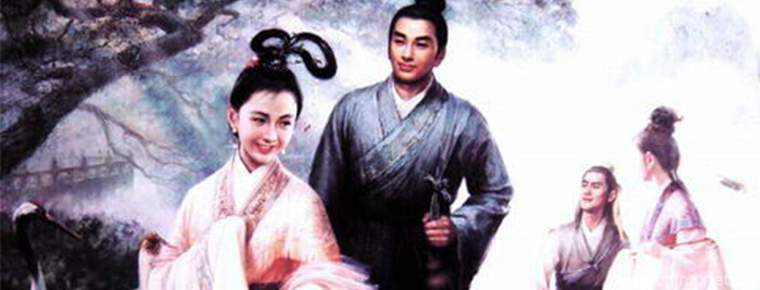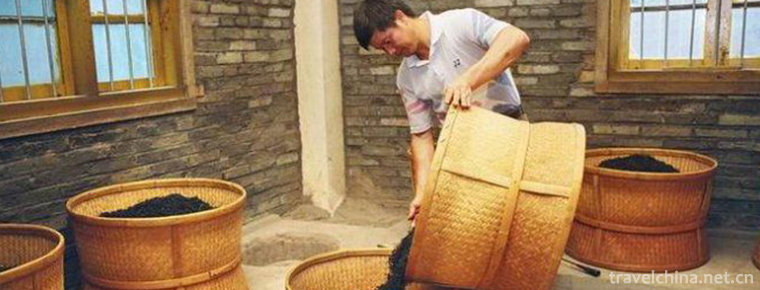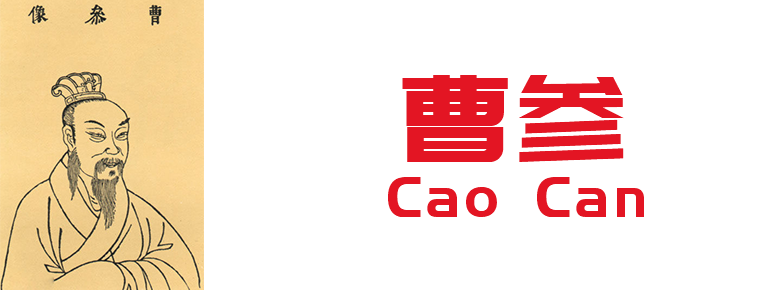Guangdong folk music
Guangdong folk music
Taishan City, located in the southwest of the Pearl River Delta, is a famous home of overseas Chinese. Taishan's "Eight-tone Class" is one of the activities of Guangdong music, which has a unique local color and a long history. During the Ming and Qing Dynasties, the Eight-tone Class mainly played Buddhist music and folk tunes. After the Taiping Heavenly Kingdom Movement, the Eight Music Class carried out a reform, combining music performance with opera singing, and gradually stepped into maturity. After 1949, Guangdong music activities in Taishan City were brought into the category of urban and rural culture rooms, and became the activity items of culture rooms. There are more than 120 Guangdong music activities Organizations in the whole city, covering both urban and rural areas.
In the early stage, there were only two strings, violin, three strings, Yueqin and horizontal chord, commonly known as "Five Heads", which had a wide range of performances, or padded the stage for opera performances, or performed by vagrant artists in tea houses and wine shops, or festival for weddings and funerals, or self-entertainment for the people. A large number of Cantonese musicians have compiled and created their own works, and have accumulated hundreds of repertoires. Such as "thunder in dry days", "rain beating banana", "double hatred", "step high", "hungry horse ringing bell", "chain buckle", "dragon race", "Pinghu autumn moon", "peacock opening screen", "entertainment level" and so on.
Guangdong music, mainly spread in the Pearl River Delta of Guangdong Province, was gradually formed at the end of the 19th century and the beginning of the 20th century on the basis of the local folk "Eight Sounds Club" and Cantonese opera accompaniment cards. Conventional instrumental music includes Yuehu, Qinqin, Pipa, Yangqin, Dongxiao, larynx, Sheng, wooden fish and bells.
On May 20, 2006, Guangdong Music was approved by the State Council to be included in the first batch of national intangible cultural heritage lists.
historical origin
Guangdong music originated in Wanli period of Ming Dynasty, formed in Guangxu period of Qing Dynasty and flourished in the Republic of China. It covers a wide range of contents, including Cantonese opera and Chaozhou music, ditties and local folk songs, etc. Now it refers specifically to silk and bamboo music.
Guangdong music has distinctive local color and unique style. It has been produced and spread in the Pearl River Delta of Guangdong Province. It has a wide range of contents, including Cantonese opera and Chaozhou music, ditties and local folk songs, and our Cantonese music refers specifically to silk and bamboo music.
In modern times, Guangdong Xiaoqu was popular for a time, whether it was accompaniment of opera, street performances or wedding and funeral celebrations, and the music played by this band was also called "eight tones", "street music" and "seating music". The sound color of Guangdong music is clear, bright and beautiful; the melody style is colorful, jumping and lively; the structure of the music is mostly short and single sketches, and there are few large-scale suites.
Before 1921, Guangdong music was formed in the late Qing Dynasty and the early Republic of China (the beginning of the twentieth century). It developed rapidly and soon became popular throughout the country. It was also popular in Hong Kong, Macao and Southeast Asian countries where overseas Chinese lived. At the end of the Qing Dynasty, there were many "passes" popular in Guangzhou and the Pearl River Delta -- "also known as Baozi, that is, when the Silk String Orchestra were not singing, the scores of each chord were also synthesized and the scores of minor tunes" were also popular. Guangdong music developed on the basis of these folk music. The instruments used in this period are two strings, violin (non-western violin, Chinese instruments, the same shape as Banhu, about the Ming Dynasty), three strings, moon piano, flute (or xiao), commonly known as "Five Heads", also known as "Hard Bow".
In early music, the notes are scattered and the rhythm lacks change. In the long-term development, new features are gradually formed. There are many decorative tone types added to the tune, called "Jiahua". The tone is clear and bright, the melody is smooth and graceful, and the rhythm is lively and lively. In the early 20th century, Yan Gongsheng, a representative of Guangdong music, appeared as a folk collective creation. During this period, the representative repertoires were "Thunder in the Dry Sky", "Button Button", "Down Curtain", "Three Pools Into the Moon", "Hungry Horse Ring Bell", "Little Peach Red", "Autumn Moon of the Han Palace", "Double Sound Hatred", "Rain Strikes Banana" and so on.
artistic characteristics
It is composed by Cantonese people without lyrics, including folk music, Han music and Chaozhou music in the Pearl River Delta. Pure musical instruments, with Lingnan charm, also known as Cantonese music. The combination of ancient and modern China and the West has its own style. It is open and compatible. The melody is bright, the rhythm is bright and the structure is unique.
Local instrumental music
Guangdong music is a kind of instrumental music originating in Guangzhou dialect area. It originated in Guangzhou and the Pearl River Delta at the beginning of this century. It is popular at home and abroad and enjoys a high reputation and a large audience. Among them, "Step Up" is often heard. At the entrance ceremony of the national teams at the opening ceremony of the 2008 Beijing Olympic Games, there is a background music playing "Step Up", which is pleasant and like "Step Up". CCTV's annual "Seven Days of Happy New Year" and other programs also use it as background music. It is based on Guangdong folk tunes and some Cantonese opera music and brand music, absorbing the nutrients of ancient Chinese folk music, especially in the southern region of the Yangtze River. After nearly 300 years of gestation, it has perfected and developed local folk music.
Combined musical instrument
There are five main forms of Guangdong Music Ensemble instruments:
Hard bow combination: two strings, violin (big banhu), three strings, moon piano and throat tube (or horizontal chord), then constitute five heads.
Soft bow combination: Gaohu, Yangqin, Pipa (or Qinqin), Dongxiao, Coconut Hu | or Erhu.
The combination developed from the local music accompaniment forms: Dongxiao, Coconut Hu, Pipa (zither or Qinqin).
Blow and Beat Orchestra: Major and small Suonas as the main music, accompanied by percussion instruments such as gongs and drums, or other stringed instruments.
Western instruments: violin, saxophone, electric guitar, xylophone and other core, often used to play music similar to light music, dance music.
Program music
Guangdong music is a kind of Title music, which is simple and complicated in structure. It is rich in instrumental music and wide range of music, as well as the rich and changeable expression techniques, landscape, lyric, shape, so the local color is rich, has a special artistic charm. Cantonese music is good at describing the living environment, showing concern for the traditional life interest. Appreciating it does not necessarily mean finding significant social and life themes in it, but the description of natural scenery often brings entertainment.
Early works
From the early 1920s to the 30 years before liberation, more than 300 pieces of music were created in Guangdong, of which more than 50 have been circulated at home and abroad. The main works are "Thunder in the Dry Sky", "Down Curtain", "Rain Strikes Banana", "Dragon Race", "Hungry Horse Ring the Bell", "Pinghu Autumn Moon", "Step High", "Bird Throws into the Forest", "Chanyuan Bell" and so on. After liberation, Guangdong music has made great progress. Many excellent composers and performers have emerged and a large number of new works have been created. Among them, such as "Fish swimming in spring water", "Spring suburban horse test", "Mountain Spring Morning", "Happy sickle" and so on. It is also widely circulated.
From 1920s to 1930s, Guangdong music flourished. Professional composers and performers such as Lv Wencheng and He Liutang appeared. The original "hard bow" band also developed into "soft bow". Since 1950s, Guangdong music has been developing continuously.
From 1920s to 1930s, Guangdong music flourished. Many professional composers and performers appeared, such as Liu Tang, Lu Wencheng, Yi Jianquan and Yin Zizhong. Around 1926, influenced by silk and bamboo in the south of the Yangtze River, Lv Wencheng introduced Erhu into Hong Kong and Macao, and changed it into a clear and bright Yuehu (also known as Gaohu) with wire strings and fixed strings. Join Yangqin, Qinqin, and Gaohu as the main musical instrument, known as the "three heads", also known as the "soft bow". Later, on the basis of "three pieces of head", silk and bamboo instruments such as Dongxiao, flute and coconut beard were added, and the band expanded. It was only around 1930 that the band was finalized. Representatives include He Liutang's "Dragon Race", "Bird Hurricane", "Drunken Wong Fishing the Moon", "Seven Stars Accompaniing the Moon"; Lu Wencheng's "Step High", "Pinghu Autumn Moon", "Waking Lion", "Qishan Phoenix", "Reef Ming Qin"; Yin Zizhong's "Huaqi Hero" and "Bird Throwing into the Forest" by Yi Jianquan.
During the Anti-Japanese War, Guangdong music fell into a low ebb at one time, and some vulgar works appeared, such as "Sweet Sister" and "Whisper" by He and Nian.
Since the 1950s, Guangdong music has made great progress. Musicians have collected and sorted out Guangdong music, studied and reformed the harmony and orchestration of Guangdong music, published a lot of music scores, created and performed a lot of excellent songs, such as Chen Deju's Spring Horse Trial, Lin Yun's Spring to the Field, Liu Tianyi's Fish and Spring Water Trip and Liu Tianshui's Spring Water Trial. Qiao Fei's Spring Morning in Mountain Country.
Guangdong music now uses Gaohu, Yangqin, Qinqin, Dongxiao, Daruan, Zhonghu and so on. Gaohu is the main musical instrument. Among them, "sliding finger" is the most distinctive performance method of Guangdong music, and it is also divided into "Xiaochuo", "Dachuo", "Xiaozhu", "Dazhu", "Backsliding" and so on. The main chord types are scale tuning (52 chords), upper six tunes (15 chords), B reverse tuning (37 chords), Shigong tuning (63 chords) and Gongbei tuning (37 chords). Different chord types express different emotions.
Representative works
"Rain beats banana" is one of the early excellent music. The music expresses the pleasant mood of life in the South with a smooth and lively melody. The tune uses such techniques as dumb tone and flower adding to describe the dripping rain on the banana, the waving shape of the banana in the rain and the joy of people in hot and dry weather.
Why did Liu Tang pass down the score of Hungry Horse Ring Bell? It used to play Pipa as the main instrument and then changed to string music. With unstable rhythm and the use of various tone types, the music highlights the use of Si and FA two-tone scale, vividly showing the image of hungry horses ringing bells.
Pinghu Autumn Moon is the masterpiece of Lv Wencheng, a famous Guangdong musician. He once traveled to Hangzhou in the golden autumn season, touched the scenery and created the song. It expresses the author's feeling of the beautiful scenery of the West Lake. The melody adopts both Zhejiang folk music and Guangdong music style. It is one of the most outstanding melodies in Chinese instrumental music works.
"Bubugao" is the representative work of Lv Wencheng, a famous Cantonese musician. It was composed by Shen Yunsheng in 1938. It is a famous Cantonese music with distinctive features. It was very popular at that time. The melody is lively and exciting, increasing layer by layer, the rhythm is lively, the sound waves stack up and down, one by one relaxation, the music is full of motivation, giving people a positive sense of striving for progress.
Dragon Flying and Phoenix Dance, a long dragon playing with dragon lanterns in folk festivals, always becomes the call of Chinese people for a new climate. Longfeng Chengxiang is the symbol of beautiful things in the eyes of the Chinese people. The theme tone of the music adopts a syncopated rhythm, which is highly motivating and frustrating. If the dancer's gait moves forward and backward, he tosses and turns. The refreshing timbre of the gong, the singing of the suona and the regular rhythm of the plucked instruments all contribute to a happy atmosphere.
"Autumn Moon of the Han Palace" (also known as "Three Pools Yinyue"), Chinese traditional instrumental music works, many of which have been circulated and adapted for a long time, are far from the original title of the song. The Autumn Moon of the Han Palace was originally a song of grief, while the Three Pools Into the Moon has swept away the feeling of grief. In the main melody of the original Beiqu, a large number of subtle decorative colors of the Cantonese music language were added, so that the strength of the Beiqu was long and became the delicate and light of the Cantonese opera.
Inheritance significance
Guangdong music is a kind of traditional Chinese silk and bamboo music popular in the Pearl River Delta and Guangfu dialect area with Guangzhou as the center. It is a treasure of excellent traditional folk culture in Lingnan. With its light, soft, Chinese, fine, strong style and fresh, smooth, melodious and beautiful Lingnan characteristics, it is widely loved and welcomed throughout China's great rivers, north and south, and popular all over the world.
Guangdong music has a history of more than 400 years. Since Ming and Qing Dynasties, Guangdong music has experienced germination, development and maturity. There are more than 500 songs with audible titles and scores.
Guangdong music openly chooses, absorbs and transforms the beneficial elements of foreign music culture and other folk arts in China. It has formed a unique folk music variety with a group of outstanding composers, performers, representative instruments and their combinations. Because of its clear and bright timbre, smooth melody and clear rhythm, it is praised as "transparent music" by foreign countries. Its influence at home and abroad far exceeds that of other forms of folk music in China.
The 1920s and 1930s were the heyday of Guangdong music. New works were constantly emerging and talented people were emerging. From creative techniques to playing techniques and popular repertoires, the use of colour instruments and their combination forms have gradually penetrated into the mainland of China. Many provinces, municipalities and regions in the country have organized associations of different forms of Cantonese music, at least playing records and recordings of Cantonese music, once known as "national music", and Cantonese music has undoubtedly played an active role in the development of modern times. Important role. Guangdong Music and Cantonese Opera, Lingnan Painting School are known as the three great artistic treasures of Lingnan, and three business cards of Guangdong.
Overseas, where there are Chinese, there is Cantonese music. Cantonese music, which they call local accent, is like an emotional bond between overseas Chinese and their homeland. It plays an important role in absorbing Chinese cultural traditions and learning historical civilization for overseas Chinese.
Guangdong's music culture has a profound and rich connotation. After hundreds of years of inheritance and development, it has its own system and unique style, which is deeply rooted in Lingnan folk. And this excellent traditional cultural treasure is in urgent need of protection and support. As an outstanding representative of Lingnan culture, Guangdong's music culture has a profound and rich connotation. After hundreds of years of inheritance and development, it has its own system and unique style, which is deeply rooted in Lingnan folk. This excellent traditional cultural treasure is also facing the problems of inheritance and development, and the protection and support work needs to be strengthened urgently.
The state attaches great importance to the protection of intangible cultural heritage. On May 20, 2006, Guangdong Music was approved by the State Council and listed in the first batch of national intangible cultural heritage list.

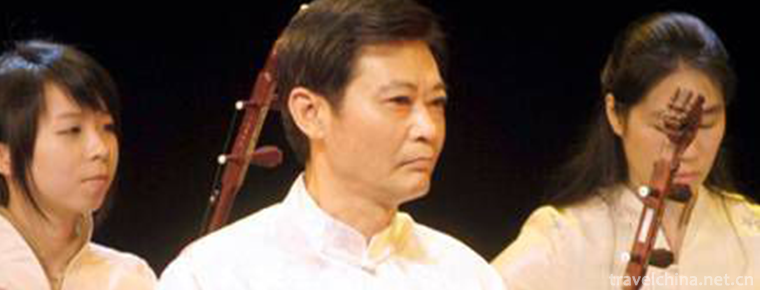
-
Inner Mongolia Autonomous Region Alshan Chaihe Tourist Scenic Area
Inner Mongolia Autonomous Region Alshan Chaihe Tourist Scenic Area/Chaihe Tourist Scenic Spot has a total area of 1368.7 square kilometers.
Views: 167 Time 2018-12-02 -
Boundary Island Scenic Area
Border Island Eco-cultural Resort, a national 5A class tourist attraction, covers an area of 0.45 square kilometers. Located at the exit of Niuling 15 of Haikou Sanya East Highway, Hainan Province.
Views: 139 Time 2018-12-12 -
Five spring mountain
Wuquan Mountain is located at the northern foot of Gaolan Mountain, south of Lanzhou City. It is a famous Longshang resort with a history of more than 2,000 years.
Views: 152 Time 2018-12-22 -
Guanlan Mountain and Water Pastoral
Shenzhen Guanlan Mountain and Water Pastoral Tourist Park covers an area of 300,000 square meters. It is located in Guanlan Street, Longhua District. It integrates food, housing, hot springs.
Views: 124 Time 2019-01-13 -
mount yi
Yashan, also known as "Zou Yashan", "Zou Shan", "Dong Shan", is one of the nine famous historical and cultural mountains in ancient China at an altitude of 582.8 meters. .
Views: 128 Time 2019-03-04 -
Changshan Cheerful Ballads
In Changshan, the custom of applauding when marrying and bridging a new house has been popular among the people since ancient times for the sake of luck. The content of applause for marriage.
Views: 380 Time 2019-04-16 -
Ha Ni Ha Ba
Ha Ni Ha Ba, an important part of Chinese Hani folk literature. Hani Haba, which means Hani ancient songs, is a popular and far-reaching folk song in Hani social life..
Views: 343 Time 2019-05-02 -
Jinhua Taoism
Jinhua Daoqing is also known as singing news and persuading Shiwen. It is a traditional rap art in Zhejiang Province. It combines with Hangzhou gongshu, Wenzhou drum lyrics, Ningbo .
Views: 255 Time 2019-05-06 -
Legend of Liu Ruan
The legend of Liu Ruan, also known as the story of Liu Ruan's encounter with immortals, is spread in Shangxian (now Xinchang, Shengzhou) and Tiantai. It is a mythological love story that takes Liu Rua.
Views: 389 Time 2019-05-13 -
Production Techniques of Dahongpao of Wuyi Rock Tea
Wuyi Rock Tea (Dahongpao) production technology, local traditional handicraft in Wuyishan City, Fujian Province, one of the national intangible cultural heritage..
Views: 116 Time 2019-06-30 -
Cao Can
Cao Can(? - 190 BC) , Han nationality Peixian people In the Western Han Dynasty, the founding fathers and famous generals were the following. Xiao He Later, the second dynasties in the Han Dynasty wer.
Views: 286 Time 2019-09-15 -
Gesala Ecotourism Area
Gesala eco-tourism area is located in Yankou Township, walai Township, Wenquan Township and Qinghe Township in the northwest of Yanbian County, Panzhihua City. It is located at the junction of Sichuan Province and Yunnan Province..
Views: 365 Time 2020-10-15


